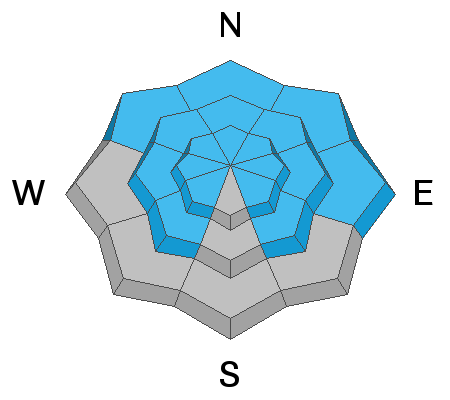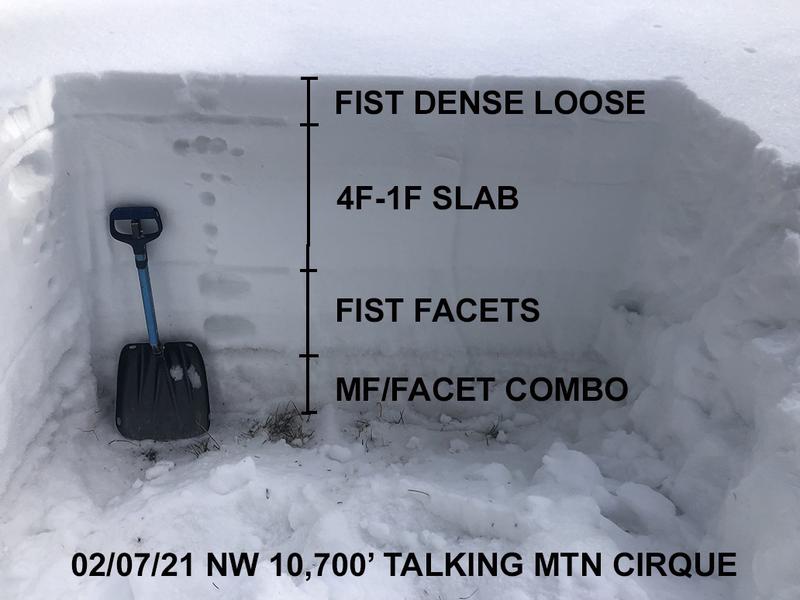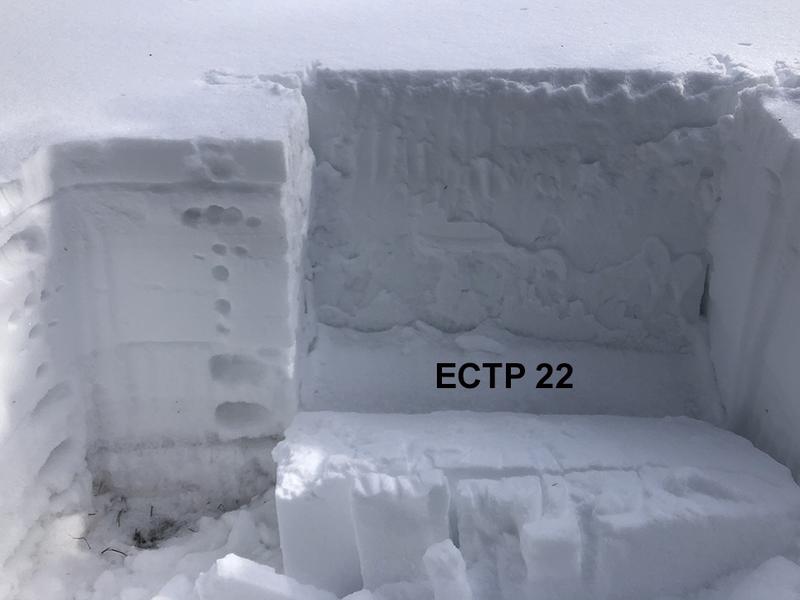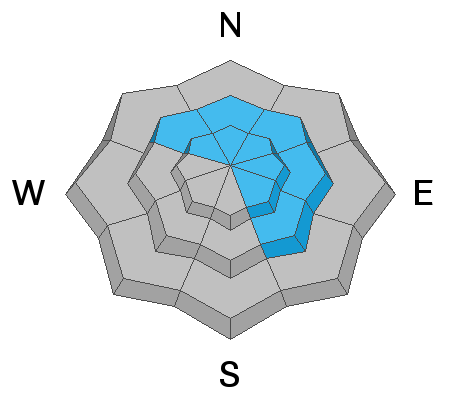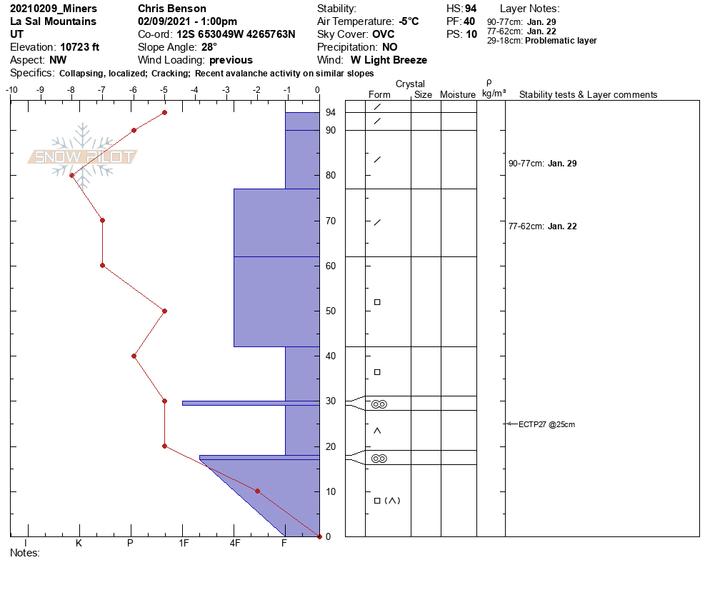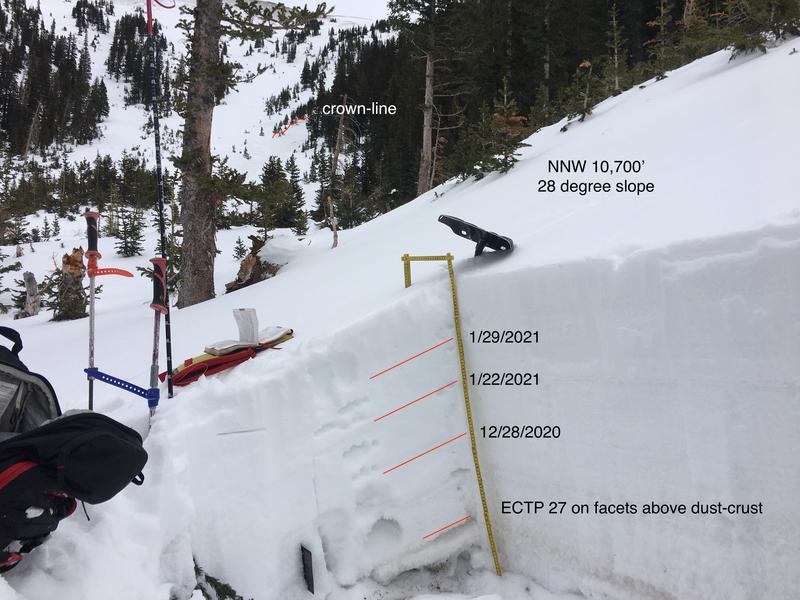Forecast for the Moab Area Mountains

Issued by Eric Trenbeath on
Friday morning, February 12, 2021
Friday morning, February 12, 2021
Heads up! Rising avalanche danger through the weekend! The avalanche danger is MODERATE this morning but depending on snow amounts could increase to CONSIDERABLE later today. New and wind drifted snow will add stress to buried persistent weak layers and deep and dangerous, human triggered avalanches will become increasingly more likely on steep slopes facing NW-N-SE. If we see more than about 6" of new snow, storm snow avalanches will be possible on all aspects. Backcountry travelers need to be alert to changing conditions such as accumulating and wind drifted snow. Look for signs of instability such as cracking and collapsing, and continue to avoid steep slopes facing NW-N-SE.
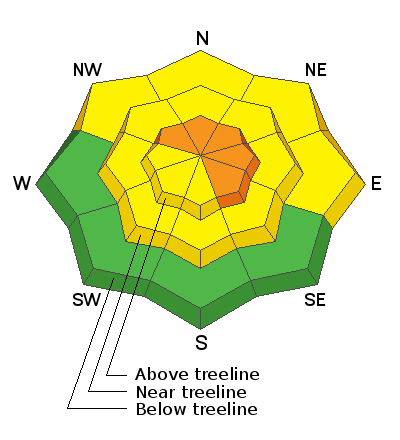
Low
Moderate
Considerable
High
Extreme
Learn how to read the forecast here


